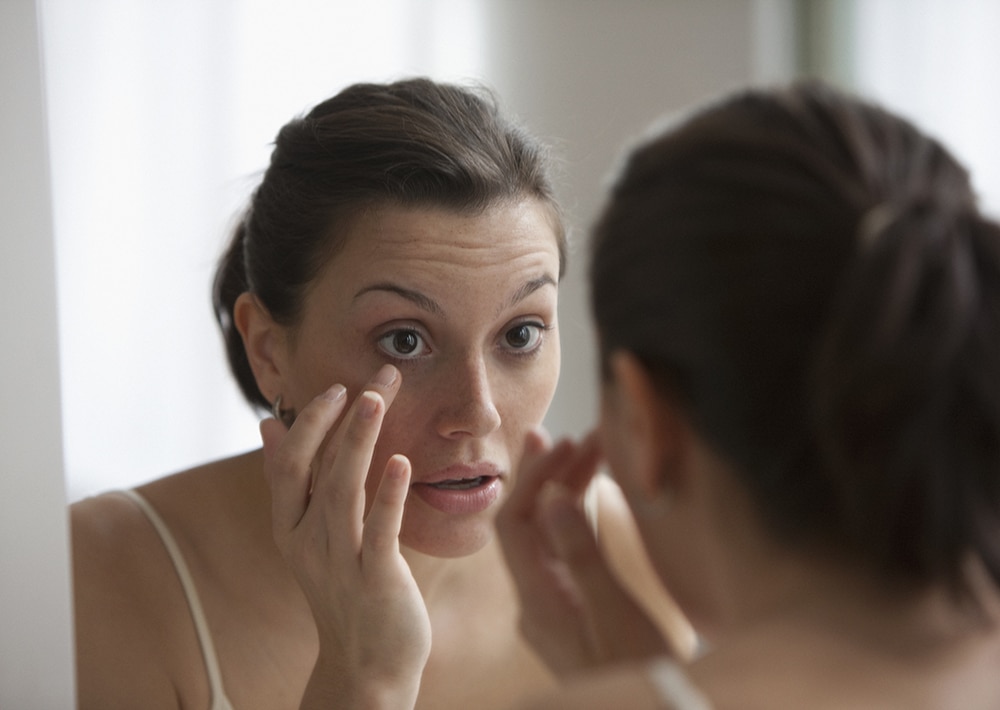Poison Ivy In My Eye: What Should I Do? / Understanding Urushiol Oil

If there’s one thing that ruins a day in the great outdoors, it’s a run-in with poison ivy or oak. But what happens if you accidentally rub your eyes and spread the itchy, scratchy reaction even further?
Urushiol oil, a substance found in plants like poison ivy, poison oak, and poison sumac, is notorious for causing uncomfortable and sometimes severe allergic reactions. Contact with urushiol oil usually follows a rash, itching, and redness. But what happens if this oil gets in your eyes?
Use our comprehensive guide on what to do if urushiol oil gets in your eyes, learn how this toxic oil spreads, and how to prevent the spread of poison ivy rash.
Understanding Urushiol Oil & How it Spreads
Urushiol is an oily resin found in the leaves, stems, and roots of poison ivy, oak, and sumac. It is highly allergenic, and even a small amount can cause a reaction in most people. The oil is sticky and can easily attach to anything it touches - your skin, clothing, tools, pets, or even smoke particles from a burning plant.
When the oil comes in contact with the skin, it penetrates within minutes. If not promptly removed, it can lead to an allergic reaction known as contact dermatitis, characterized by an itchy rash, redness, and blisters. Urushiol oil can remain active on any surface for up to 5 years, meaning indirect contact with the oil (like touching a contaminated object) can also cause a reaction.
If you come into contact with urushiol oil, acting fast is important! Be sure to clean your skin as soon as possible to limit the spread of poison ivy. Use a product like Tecnu Extreme Poison Ivy Scrub to remove the oil from the skin. This powerful cleanser gently exfoliates while eliminating urushiol so the skin can heal.
Preventing the Spread of Poison Ivy
To prevent the spread of poison ivy and other urushiol-containing plants, it's crucial to recognize these plants and avoid direct contact whenever possible. Here are some steps to take:
- Educate Yourself and Others: Learn to identify poison ivy, poison oak, and poison sumac. Remember the old saying, "Leaves of three, let it be".
- Wear Protective Clothing: When venturing into areas where these plants are common, wear long pants, long sleeves, boots, and gloves.
- Keep Pets on a Leash: Pets can pick up urushiol oil on their fur and spread it to you. After a walk, wash your pet's fur with Tecnu Original or Tecnu Detox Wipes (while wearing gloves) to remove any urushiol oil.
- Clean Contaminated Objects: Urushiol oil can remain active on objects for years. Use convenient Tecnu Detox Wipes clean tools, clothing, and any other items that might have come into contact with these plants.
- Do Not Burn Poison Ivy: Burning poison ivy releases urushiol oil in the smoke, which can cause severe respiratory problems if inhaled and can contaminate the skin and eyes.
What To Do If Urushiol Oil Gets in Your Eyes
When urushiol oil gets into your eyes, it can cause a severe inflammatory reaction. The eyes may become red, swollen, and itchy. Here's what you should do:
- Do Not Rub Your Eyes: Rubbing your eyes can spread the oil to other body parts and worsen the condition. It can also cause injury to the eye.
- Rinse Your Eyes: Rinse your eyes immediately with lukewarm water. You can use an eyewash station if one is available. Do not use hot water, as it can increase the absorption of the oil.
- Remove Contact Lenses: If wearing contact lenses, remove them as soon as possible (make sure your hands are clean!). The oil can stick to the lenses and continue to irritate the eyes.
- Seek Medical Attention: Seek immediate medical attention. While waiting for medical help, continue rinsing your eyes. Do not apply creams, ointments, or other home remedies to your eyes without consulting a healthcare provider first. They can cause more harm than good. Once at a healthcare facility, a medical professional will thoroughly examine your eyes. This may include flushing your eyes with a saline solution to help remove any remaining urushiol oil. Sometimes, a healthcare provider might prescribe medications like antihistamines or corticosteroids to reduce inflammation and allergic reactions.
- Follow-Up: Even after receiving initial treatment, it's important to follow up with your healthcare provider or an ophthalmologist (eye doctor). Urushiol oil can cause delayed reactions, and your symptoms could worsen over a few days.
Prevention is Better Than Cure
Preventing exposure to urushiol oil in the first place is the most effective way to avoid complications, including those related to the eyes. If you plan to spend time in areas where poison ivy, poison oak, or poison sumac are common, take precautions to protect yourself. Wear protective clothing, and thoroughly clean your gear and pets after exposure.
Furthermore, if you have a garden, learn how to remove these plants safely. This typically involves wearing protective clothing and carefully digging out the entire plant, including the roots, without breaking them (which can release urushiol oil). Dispose of the plants safely – do not burn them.
Urushiol oil can cause a nasty rash and severe eye complications if not handled promptly and correctly. Recognizing the presence of poison ivy, poison oak, or poison sumac, and understanding how to deal with them, can save you a lot of discomfort and potential medical complications. However, should you come into contact with urushiol oil, especially in your eyes, seek immediate medical attention. The eyes are delicate; any home remedies or delay in seeking professional help could lead to serious, long-term damage.




